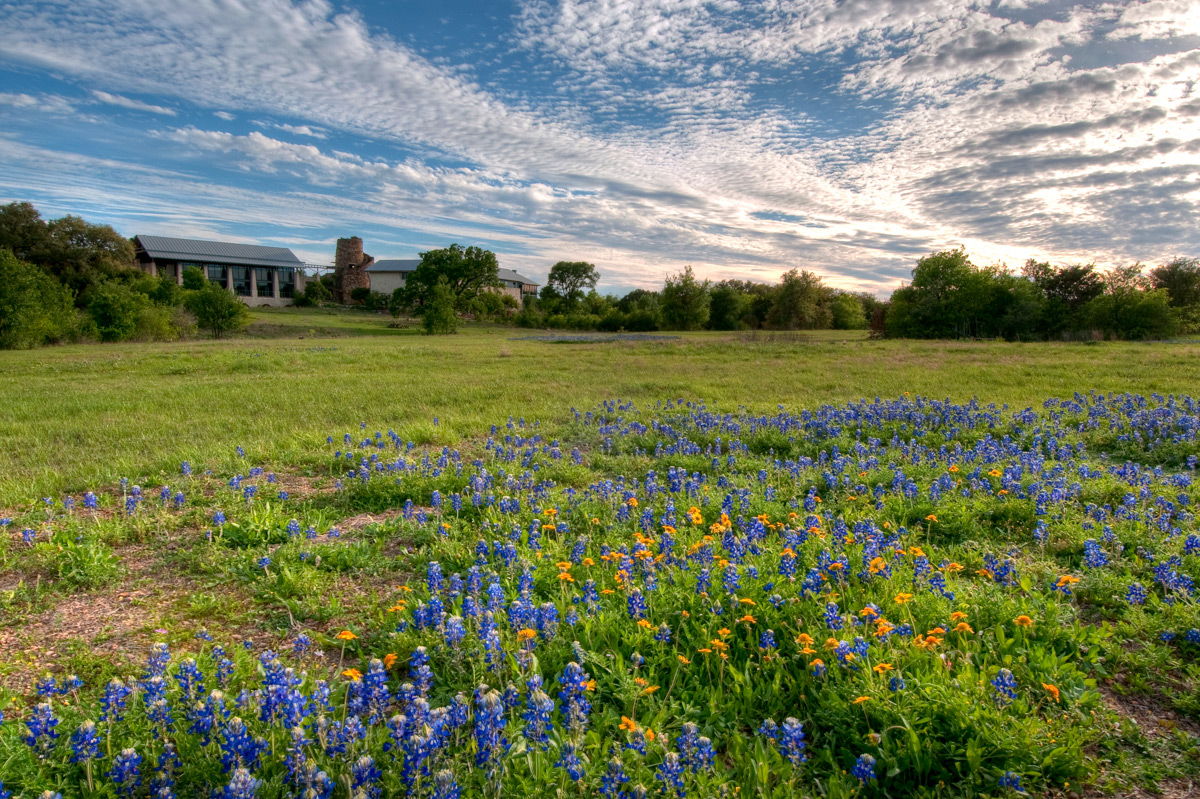PRESSROOM
2021 Wildflower Season Still on Track After Winter Storm

View of Texas bluebonnets and huisache daisies in the Savanna Meadow from a past wildflower season. PHOTO Wildflower Center
After enduring a highly unusual winter, Texans can look forward to the familiar joys of a wonderful spring wildflower season, say experts at the Lady Bird Johnson Wildflower Center.
While February’s winter storm Uri impacted some native plants in Central Texas, Director of Horticulture Andrea DeLong-Amaya expects that many wildflowers will bloom as usual.
“Our Texas bluebonnets (Lupinus texensis) and many other native wildflowers are adapted to cold temperatures,” she said, “and the 6 to 8 inches of snow the area received acted as a blanket to protect them against the many days of freezing temperatures.”
Some evergreen plants, however, such as the early blooming Carolina jessamine vine (Gelsemium sempervirens) suffered ice-burned foliage and may not have much of a presence this season, said DeLong-Amaya. And many first-to-flower trees were hardest hit, losing their buds due to multiple days of ice. While Texas mountain laurel (Sophora secundiflora) is not blooming at the Center, redbuds (Cercis canadensis var. texensis) and native plums (Prunus spp.) have put out new buds, which is good news for pollinators. Overall, plants growing in some warmer microclimates throughout urban areas may have fared better.
Prior to the February cold snap, Central Texas was drier than usual, with 75% or less of average rainfall over the last quarter of 2020. Snowmelt from February — not something usually associated with Central Texas — could be another factor in favor of flowers, albeit slight. According to David Yeomans, KXAN’s chief meteorologist, it takes about a foot of snow to deliver the equivalent moisture of 1 inch of rain.
Looking ahead, Yeomans said, ”We expect slightly drier and warmer than normal weather across the state. The La Niña weather pattern, which brings us such conditions, has been weakening and is expected to disappear during the spring — something that could open the door to more normal rainfall and temperature patterns.”
The first round of post-storm blooms should be making a debut any day now in Central Texas. Golden groundsel (Packera obovata) is one such anticipated species, with sunny flowers that bloom in miniature bouquet formations. Encountered on a grizzled early spring day, the cheerful flowers perfectly evoke the Pantone 2021 Color of the Year duo: Ultimate Gray and Illuminating. Other floral harbingers of spring in the area are spiderworts (Tradescantia gigantea) and windflowers (Anemone berlandieri).
As for the beloved state flower, Texas bluebonnets weathered the winter well and seedlings are looking healthy. “If the warm weather we had in January and February had continued, they may have begun to bloom earlier than normal,” said DeLong-Amaya. “The cold probably reset them to bloom more in line with their regular schedule in early March.” Central Texas’ bluebonnet season typically peaks in early to mid-April.
For those planning outings to see bluebonnets and other iconic Texas wildflowers, wildflower drives are a fairly pandemic-friendly activity. But many Texans are in a close-to-home walking groove, which presents an opportunity to observe species that could be missed from a car.
DeLong-Amaya advises exploring a local green space and finding ways to appreciate the little things near your home. “Take a hand lens out on your walks if you have one, or use your phone camera to zoom in and look close. Stop and sketch if you have time! Maybe you’ll also notice whatever insects are visiting the plant, and that can be entertaining too.”
Though many native flowering trees might not bloom this year, wildflower hunters can likely still find a few blooming redbuds, Mexican plum (Prunus mexicana) and Texas mountain laurels. People should also keep an eye out (and downward) for scrappy annuals and perennials such as windflowers and spiderwort that can grow in cracks or small patches of soil in a wide range of environments.
Photos for media are available upon request. Inquire with K. Angel Horne.
